IN MEMORY OF HELGA DE ALVEAR
Helga de Alvear (Kirn/Nahe, Germany, 1936-Madrid, Spain, 2025) passed away at the age of 88. A fundamental figure of collecting and gallerism in Spain and Europe, her name remains as a metaphorical vocative and reference of one of the keys to the evolution and understanding of how contemporary art should be shared and communicated to facilitate its appreciation as a fundamental part of the times in which she lived. A true believer that artistic practices should come to the surface and be another representation of the motifs and realities that shaped each period of history, convulsive in the case of Spain, she approached it with the vision and experience of someone who finds a necessary space to appreciate the present and build a future.
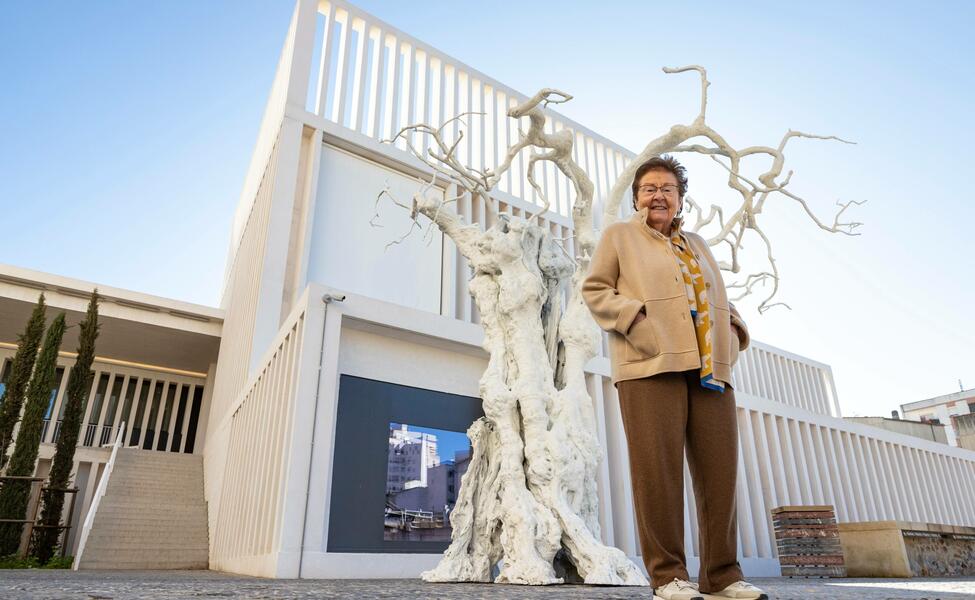
As a collector of natural elements since she was a child in her native Germany, her appreciation of the colors and forms of nature led her to a certain fascination for abstract art. That awakening in her childhood led her to an inexorable path of curiosity and her studies took her to Switzerland and London and, in the begginings of her third decade, she moved to Madrid where she studied Hispanic Culture and frequented El Prado and certain environments of the Spanish artistic life of the 60s.
Submerged in a certain localism, that cultural environment that was beginning to be familiar to her needed a certain openness, a projection that Helga de Alvear, both for her eagerness and her vision, would work to make happen. Key, of course, was her personal discovery of Informalism and, especially, of the Cuenca Group led by Gustavo Torner, Fernando Zóbel and Gerardo Rueda, and of El Paso, groups and tendencies that gathered the attention of the practices of the time and that would be fundamental in the evolution of her biography as a collector, this time of contemporary art.
The Helga de Alvear Collection began to take shape in 1967 in this environment impregnated with creativity and social focus, and, practically as a necessary impulse, a vision of collecting as an instrument of dissemination was forged. She will find in the Juana Mordó Gallery the necessary elements for an apprenticeship in the art industry environment. From the gallery and with the opportunity to access the then great complexes of the sector in Europe, she treasures enough knowledge and value to be one of the gallerists who see in the creation of ARCO a fundamental tool to build a new panorama of contemporary art and its market in Spain.
Those were intense years. After the first edition led by Juana de Aizpuru, Helga de Alvear's role in the circuit and the industry became more relevant and she would masterfully manage Juana Mordó's gallery -even after her death- until, in 1995, she would fulfill her dream of opening her own space near the then almost-new Reina Sofía Museum. Her objective was still in line with the diffusion and consolidation of an interior art market, but her vision led him to bet on techniques that were perhaps too risky at the time and on international artists.
The galleries were beginning to overcome their dependence on canvas and sculpture, and her backing of photography and installations, to which an incipient video art was added, led to the almost unanimous acceptance of new media that required a certain authority to enter the context of the national galleries. At a time when the leadership in the construction and strengthening of the circuit had a female voice and authority, Helga de Alvear, along with Elvira González, the aforementioned Juana de Aizpuru and Soledad Lorenzo, consolidated a philosophy and a way of understanding the gallery business that remains, practically, as the core of its DNA.
In a new turn of the screw, and as if from those steps that decades ago she could have traced in her thinking, Helga de Alvear gave us her last great action. With an emphasis on dissemination, and perhaps with one foot already out of the contemporary art industry as such, her collection, which served and still serves as a background for numerous exhibitions around the world for its representative and artistic value, found a wonderful home. Almost in a parallel path to that of Wolf Vostell, her vital itinerary from Germany will lead him to the landscapes of Cáceres, in whose capital, she began her journey to establish the Helga de Alvear Museum of Contemporary Art.
That last and precious gift unwrapped the box that contained her whole ideology. The public should have access to art, be critical of it and use it to promote thought and research. Her choice also energized at the same time an area somewhat far from the artistic hustle and bustle, only close by the natural domains of Los Barruecos whose artistic value Vostell highlighted, and whose patina for awakening the value of contemporary art to all will remain present in what is her best legacy along with that of a vital imprint to understand the gallerism in Spain and the passion for art as a social catalyst.
Related Topics
May interest you
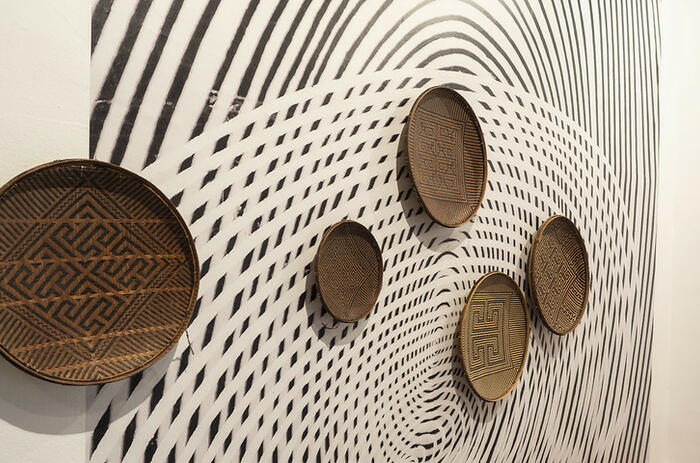
Casa de América, in Madrid, hosts Convergences / Divergences. Two Aesthetics in Dialogue, a complete exhibition curated by Ariel Jimenez in which Ye'kwana craftsmanship, a community of the Venezuelan Amazon rainforest, and modern and contemporary geometric abstraction, represented by more than a hundred works from the Juan Carlos Maldonado Collection, are in dialogue. The exhibition delves into the relationship between the different aesthetics developed contemporarily by both groups and, above all, highlights the reference to modern art movements and their partial debt to the techniques and motifs of the peoples of the Amazon.
DIALOGUE BETWEEN GEOMETRIC ABSTRACTION AND AMAZON AT CASA DE AMERICA
Casa de América, in Madrid, hosts Convergences / Divergences. Two Aesthetics in Dialogue, a complete exhibition curated by Ariel Jimenez in which Ye'kwana craftsmanship, a community of the Venezuelan Amazon rainforest, and modern and contemporary geometric abstraction, represented by more than a hundred works from the Juan Carlos Maldonado Collection, are in dialogue. The exhibition delves into the relationship between the different aesthetics developed contemporarily by both groups and, above all, highlights the reference to modern art movements and their partial debt to the techniques and motifs of the peoples of the Amazon.

Casa de América, in Madrid, hosts Convergences / Divergences. Two Aesthetics in Dialogue, a complete exhibition curated by Ariel Jimenez in which Ye'kwana craftsmanship, a community of the Venezuelan Amazon rainforest, and modern and contemporary geometric abstraction, represented by more than a hundred works from the Juan Carlos Maldonado Collection, are in dialogue. The exhibition delves into the relationship between the different aesthetics developed contemporarily by both groups and, above all, highlights the reference to modern art movements and their partial debt to the techniques and motifs of the peoples of the Amazon.
DIALOGUE BETWEEN GEOMETRIC ABSTRACTION AND AMAZON AT CASA DE AMERICA
Casa de América, in Madrid, hosts Convergences / Divergences. Two Aesthetics in Dialogue, a complete exhibition curated by Ariel Jimenez in which Ye'kwana craftsmanship, a community of the Venezuelan Amazon rainforest, and modern and contemporary geometric abstraction, represented by more than a hundred works from the Juan Carlos Maldonado Collection, are in dialogue. The exhibition delves into the relationship between the different aesthetics developed contemporarily by both groups and, above all, highlights the reference to modern art movements and their partial debt to the techniques and motifs of the peoples of the Amazon.
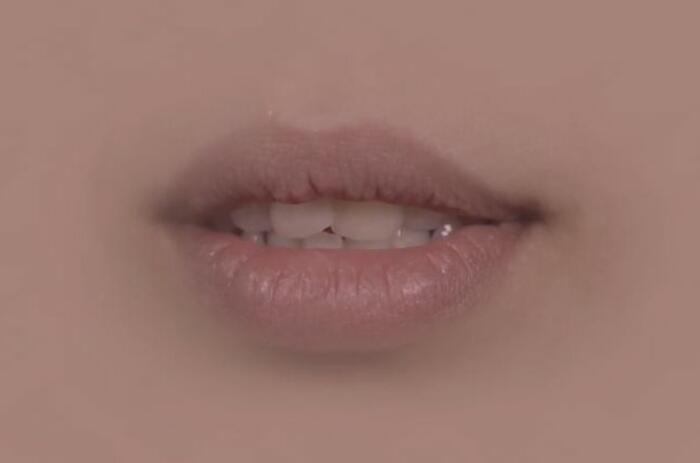
The work that Lúa Coderch (Iquitos, Peru, 1982) has been doing around language takes over her recent solo show at Madrid's The Ryder Projects to consolidate a new relational vision of communicative practices. Exhausted and exuberant, title of this partially retrospective and almost thesis exhibition, also responds to the two apparently opposite moods, but with an inexorable link, of the vital needs that seep into contemporary society between individuals and a certain extimacy that, organically, seems to have been imposed.
LANGUAGE AND SOCIETY IN LÚA CODERCH'S WORK AT THE RYDER
The work that Lúa Coderch (Iquitos, Peru, 1982) has been doing around language takes over her recent solo show at Madrid's The Ryder Projects to consolidate a new relational vision of communicative practices. Exhausted and exuberant, title of this partially retrospective and almost thesis exhibition, also responds to the two apparently opposite moods, but with an inexorable link, of the vital needs that seep into contemporary society between individuals and a certain extimacy that, organically, seems to have been imposed.
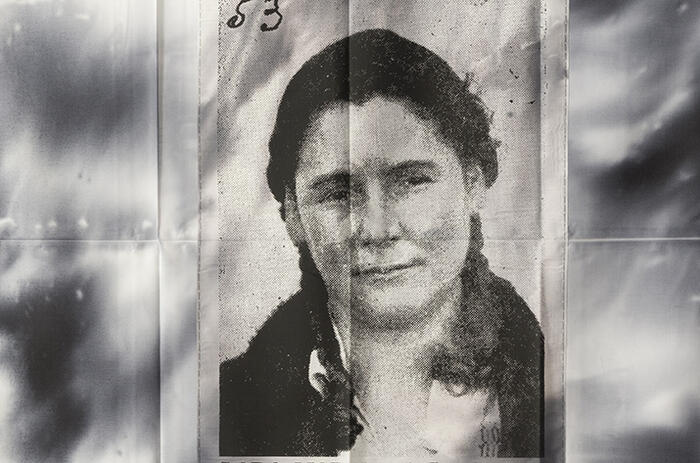
Es Baluard organizes Eugenio Dittborn. Pinturas Aeropostales, the first solo show in Spain of Eugenio Dittborn (Santiago, Chile, 1943), one of the key names in the development of Latin American conceptual art in the 1970s and 1980s. The exhibition focuses on the production of his aeropostal paintings, an artistic instrument that materializes his research and reflection on materials, the physical limits that constrain painting and its distribution and circulation.
ES BALUARD RECOVERS DITTBORN'S AEROPOSTAL PAINTINGS
Es Baluard organizes Eugenio Dittborn. Pinturas Aeropostales, the first solo show in Spain of Eugenio Dittborn (Santiago, Chile, 1943), one of the key names in the development of Latin American conceptual art in the 1970s and 1980s. The exhibition focuses on the production of his aeropostal paintings, an artistic instrument that materializes his research and reflection on materials, the physical limits that constrain painting and its distribution and circulation.
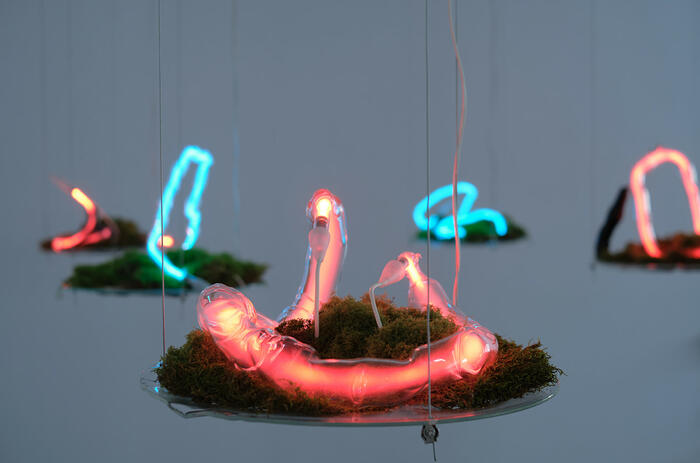
The proposal of Día Muñoz (Guayaquil, Ecuador, 1989) goes through the materialized ideas of a posthumanist future from a speculative perspective in his recent exhibition “Creaturas” de la dimensión de lo inconsciente (Creatures from the dimension of the unconscious) at the Madrid-based Ponce+Robles. To this end, she concentrates on the scientific possibilities and the multiple options of resolution, starting from organic principles with which to operate and create those dimensions of biological character and fundamentally technical essence.
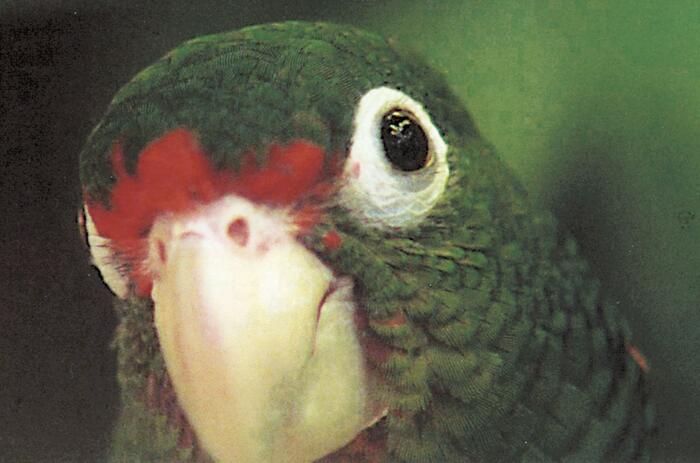
La Casa Encendida is planning a large part of its artistic, exhibition program this season around the concept of Verbos encendidos, a framework line of argument that frames the theme and the perspective from which certain public, political and social issues are approached from the institution. Escuchar (Listen) is the first verb, chosen to start with it a call for attention towards the construction of spaces and tools that allow to overcome differences and find common spaces of understanding.
ALLORA & CALZADILLA'S FABLE ON LISTENING
La Casa Encendida is planning a large part of its artistic, exhibition program this season around the concept of Verbos encendidos, a framework line of argument that frames the theme and the perspective from which certain public, political and social issues are approached from the institution. Escuchar (Listen) is the first verb, chosen to start with it a call for attention towards the construction of spaces and tools that allow to overcome differences and find common spaces of understanding.

The Badischer Kunstverein presents the work of the Brazilian poet and artist in their first extensive solo exhibition in Germany; To See Aloud includes diverse facets of her artistic practice, ranging from early text works, videotext poems, publications and printed matter to photographs, objects, object poems and installations, all the way to her most recent performances and artworks in public spaces, including sound-based and collective activations.
LENORA DE BARROS' EXHIBITION, A MULTISENSORIAL EXPERIENCE
The Badischer Kunstverein presents the work of the Brazilian poet and artist in their first extensive solo exhibition in Germany; To See Aloud includes diverse facets of her artistic practice, ranging from early text works, videotext poems, publications and printed matter to photographs, objects, object poems and installations, all the way to her most recent performances and artworks in public spaces, including sound-based and collective activations.

Casa de América, in Madrid, hosts Convergences / Divergences. Two Aesthetics in Dialogue, a complete exhibition curated by Ariel Jimenez in which Ye'kwana craftsmanship, a community of the Venezuelan Amazon rainforest, and modern and contemporary geometric abstraction, represented by more than a hundred works from the Juan Carlos Maldonado Collection, are in dialogue. The exhibition delves into the relationship between the different aesthetics developed contemporarily by both groups and, above all, highlights the reference to modern art movements and their partial debt to the techniques and motifs of the peoples of the Amazon.
DIALOGUE BETWEEN GEOMETRIC ABSTRACTION AND AMAZON AT CASA DE AMERICA
Casa de América, in Madrid, hosts Convergences / Divergences. Two Aesthetics in Dialogue, a complete exhibition curated by Ariel Jimenez in which Ye'kwana craftsmanship, a community of the Venezuelan Amazon rainforest, and modern and contemporary geometric abstraction, represented by more than a hundred works from the Juan Carlos Maldonado Collection, are in dialogue. The exhibition delves into the relationship between the different aesthetics developed contemporarily by both groups and, above all, highlights the reference to modern art movements and their partial debt to the techniques and motifs of the peoples of the Amazon.

The work that Lúa Coderch (Iquitos, Peru, 1982) has been doing around language takes over her recent solo show at Madrid's The Ryder Projects to consolidate a new relational vision of communicative practices. Exhausted and exuberant, title of this partially retrospective and almost thesis exhibition, also responds to the two apparently opposite moods, but with an inexorable link, of the vital needs that seep into contemporary society between individuals and a certain extimacy that, organically, seems to have been imposed.
LANGUAGE AND SOCIETY IN LÚA CODERCH'S WORK AT THE RYDER
The work that Lúa Coderch (Iquitos, Peru, 1982) has been doing around language takes over her recent solo show at Madrid's The Ryder Projects to consolidate a new relational vision of communicative practices. Exhausted and exuberant, title of this partially retrospective and almost thesis exhibition, also responds to the two apparently opposite moods, but with an inexorable link, of the vital needs that seep into contemporary society between individuals and a certain extimacy that, organically, seems to have been imposed.

Es Baluard organizes Eugenio Dittborn. Pinturas Aeropostales, the first solo show in Spain of Eugenio Dittborn (Santiago, Chile, 1943), one of the key names in the development of Latin American conceptual art in the 1970s and 1980s. The exhibition focuses on the production of his aeropostal paintings, an artistic instrument that materializes his research and reflection on materials, the physical limits that constrain painting and its distribution and circulation.
ES BALUARD RECOVERS DITTBORN'S AEROPOSTAL PAINTINGS
Es Baluard organizes Eugenio Dittborn. Pinturas Aeropostales, the first solo show in Spain of Eugenio Dittborn (Santiago, Chile, 1943), one of the key names in the development of Latin American conceptual art in the 1970s and 1980s. The exhibition focuses on the production of his aeropostal paintings, an artistic instrument that materializes his research and reflection on materials, the physical limits that constrain painting and its distribution and circulation.

The proposal of Día Muñoz (Guayaquil, Ecuador, 1989) goes through the materialized ideas of a posthumanist future from a speculative perspective in his recent exhibition “Creaturas” de la dimensión de lo inconsciente (Creatures from the dimension of the unconscious) at the Madrid-based Ponce+Robles. To this end, she concentrates on the scientific possibilities and the multiple options of resolution, starting from organic principles with which to operate and create those dimensions of biological character and fundamentally technical essence.

La Casa Encendida is planning a large part of its artistic, exhibition program this season around the concept of Verbos encendidos, a framework line of argument that frames the theme and the perspective from which certain public, political and social issues are approached from the institution. Escuchar (Listen) is the first verb, chosen to start with it a call for attention towards the construction of spaces and tools that allow to overcome differences and find common spaces of understanding.
ALLORA & CALZADILLA'S FABLE ON LISTENING
La Casa Encendida is planning a large part of its artistic, exhibition program this season around the concept of Verbos encendidos, a framework line of argument that frames the theme and the perspective from which certain public, political and social issues are approached from the institution. Escuchar (Listen) is the first verb, chosen to start with it a call for attention towards the construction of spaces and tools that allow to overcome differences and find common spaces of understanding.

The Badischer Kunstverein presents the work of the Brazilian poet and artist in their first extensive solo exhibition in Germany; To See Aloud includes diverse facets of her artistic practice, ranging from early text works, videotext poems, publications and printed matter to photographs, objects, object poems and installations, all the way to her most recent performances and artworks in public spaces, including sound-based and collective activations.
LENORA DE BARROS' EXHIBITION, A MULTISENSORIAL EXPERIENCE
The Badischer Kunstverein presents the work of the Brazilian poet and artist in their first extensive solo exhibition in Germany; To See Aloud includes diverse facets of her artistic practice, ranging from early text works, videotext poems, publications and printed matter to photographs, objects, object poems and installations, all the way to her most recent performances and artworks in public spaces, including sound-based and collective activations.

Casa de América, in Madrid, hosts Convergences / Divergences. Two Aesthetics in Dialogue, a complete exhibition curated by Ariel Jimenez in which Ye'kwana craftsmanship, a community of the Venezuelan Amazon rainforest, and modern and contemporary geometric abstraction, represented by more than a hundred works from the Juan Carlos Maldonado Collection, are in dialogue. The exhibition delves into the relationship between the different aesthetics developed contemporarily by both groups and, above all, highlights the reference to modern art movements and their partial debt to the techniques and motifs of the peoples of the Amazon.
DIALOGUE BETWEEN GEOMETRIC ABSTRACTION AND AMAZON AT CASA DE AMERICA
Casa de América, in Madrid, hosts Convergences / Divergences. Two Aesthetics in Dialogue, a complete exhibition curated by Ariel Jimenez in which Ye'kwana craftsmanship, a community of the Venezuelan Amazon rainforest, and modern and contemporary geometric abstraction, represented by more than a hundred works from the Juan Carlos Maldonado Collection, are in dialogue. The exhibition delves into the relationship between the different aesthetics developed contemporarily by both groups and, above all, highlights the reference to modern art movements and their partial debt to the techniques and motifs of the peoples of the Amazon.

The work that Lúa Coderch (Iquitos, Peru, 1982) has been doing around language takes over her recent solo show at Madrid's The Ryder Projects to consolidate a new relational vision of communicative practices. Exhausted and exuberant, title of this partially retrospective and almost thesis exhibition, also responds to the two apparently opposite moods, but with an inexorable link, of the vital needs that seep into contemporary society between individuals and a certain extimacy that, organically, seems to have been imposed.
LANGUAGE AND SOCIETY IN LÚA CODERCH'S WORK AT THE RYDER
The work that Lúa Coderch (Iquitos, Peru, 1982) has been doing around language takes over her recent solo show at Madrid's The Ryder Projects to consolidate a new relational vision of communicative practices. Exhausted and exuberant, title of this partially retrospective and almost thesis exhibition, also responds to the two apparently opposite moods, but with an inexorable link, of the vital needs that seep into contemporary society between individuals and a certain extimacy that, organically, seems to have been imposed.

Es Baluard organizes Eugenio Dittborn. Pinturas Aeropostales, the first solo show in Spain of Eugenio Dittborn (Santiago, Chile, 1943), one of the key names in the development of Latin American conceptual art in the 1970s and 1980s. The exhibition focuses on the production of his aeropostal paintings, an artistic instrument that materializes his research and reflection on materials, the physical limits that constrain painting and its distribution and circulation.
ES BALUARD RECOVERS DITTBORN'S AEROPOSTAL PAINTINGS
Es Baluard organizes Eugenio Dittborn. Pinturas Aeropostales, the first solo show in Spain of Eugenio Dittborn (Santiago, Chile, 1943), one of the key names in the development of Latin American conceptual art in the 1970s and 1980s. The exhibition focuses on the production of his aeropostal paintings, an artistic instrument that materializes his research and reflection on materials, the physical limits that constrain painting and its distribution and circulation.

The proposal of Día Muñoz (Guayaquil, Ecuador, 1989) goes through the materialized ideas of a posthumanist future from a speculative perspective in his recent exhibition “Creaturas” de la dimensión de lo inconsciente (Creatures from the dimension of the unconscious) at the Madrid-based Ponce+Robles. To this end, she concentrates on the scientific possibilities and the multiple options of resolution, starting from organic principles with which to operate and create those dimensions of biological character and fundamentally technical essence.

La Casa Encendida is planning a large part of its artistic, exhibition program this season around the concept of Verbos encendidos, a framework line of argument that frames the theme and the perspective from which certain public, political and social issues are approached from the institution. Escuchar (Listen) is the first verb, chosen to start with it a call for attention towards the construction of spaces and tools that allow to overcome differences and find common spaces of understanding.
ALLORA & CALZADILLA'S FABLE ON LISTENING
La Casa Encendida is planning a large part of its artistic, exhibition program this season around the concept of Verbos encendidos, a framework line of argument that frames the theme and the perspective from which certain public, political and social issues are approached from the institution. Escuchar (Listen) is the first verb, chosen to start with it a call for attention towards the construction of spaces and tools that allow to overcome differences and find common spaces of understanding.

The Badischer Kunstverein presents the work of the Brazilian poet and artist in their first extensive solo exhibition in Germany; To See Aloud includes diverse facets of her artistic practice, ranging from early text works, videotext poems, publications and printed matter to photographs, objects, object poems and installations, all the way to her most recent performances and artworks in public spaces, including sound-based and collective activations.
LENORA DE BARROS' EXHIBITION, A MULTISENSORIAL EXPERIENCE
The Badischer Kunstverein presents the work of the Brazilian poet and artist in their first extensive solo exhibition in Germany; To See Aloud includes diverse facets of her artistic practice, ranging from early text works, videotext poems, publications and printed matter to photographs, objects, object poems and installations, all the way to her most recent performances and artworks in public spaces, including sound-based and collective activations.

Casa de América, in Madrid, hosts Convergences / Divergences. Two Aesthetics in Dialogue, a complete exhibition curated by Ariel Jimenez in which Ye'kwana craftsmanship, a community of the Venezuelan Amazon rainforest, and modern and contemporary geometric abstraction, represented by more than a hundred works from the Juan Carlos Maldonado Collection, are in dialogue. The exhibition delves into the relationship between the different aesthetics developed contemporarily by both groups and, above all, highlights the reference to modern art movements and their partial debt to the techniques and motifs of the peoples of the Amazon.
DIALOGUE BETWEEN GEOMETRIC ABSTRACTION AND AMAZON AT CASA DE AMERICA
Casa de América, in Madrid, hosts Convergences / Divergences. Two Aesthetics in Dialogue, a complete exhibition curated by Ariel Jimenez in which Ye'kwana craftsmanship, a community of the Venezuelan Amazon rainforest, and modern and contemporary geometric abstraction, represented by more than a hundred works from the Juan Carlos Maldonado Collection, are in dialogue. The exhibition delves into the relationship between the different aesthetics developed contemporarily by both groups and, above all, highlights the reference to modern art movements and their partial debt to the techniques and motifs of the peoples of the Amazon.

The work that Lúa Coderch (Iquitos, Peru, 1982) has been doing around language takes over her recent solo show at Madrid's The Ryder Projects to consolidate a new relational vision of communicative practices. Exhausted and exuberant, title of this partially retrospective and almost thesis exhibition, also responds to the two apparently opposite moods, but with an inexorable link, of the vital needs that seep into contemporary society between individuals and a certain extimacy that, organically, seems to have been imposed.
LANGUAGE AND SOCIETY IN LÚA CODERCH'S WORK AT THE RYDER
The work that Lúa Coderch (Iquitos, Peru, 1982) has been doing around language takes over her recent solo show at Madrid's The Ryder Projects to consolidate a new relational vision of communicative practices. Exhausted and exuberant, title of this partially retrospective and almost thesis exhibition, also responds to the two apparently opposite moods, but with an inexorable link, of the vital needs that seep into contemporary society between individuals and a certain extimacy that, organically, seems to have been imposed.

Es Baluard organizes Eugenio Dittborn. Pinturas Aeropostales, the first solo show in Spain of Eugenio Dittborn (Santiago, Chile, 1943), one of the key names in the development of Latin American conceptual art in the 1970s and 1980s. The exhibition focuses on the production of his aeropostal paintings, an artistic instrument that materializes his research and reflection on materials, the physical limits that constrain painting and its distribution and circulation.
ES BALUARD RECOVERS DITTBORN'S AEROPOSTAL PAINTINGS
Es Baluard organizes Eugenio Dittborn. Pinturas Aeropostales, the first solo show in Spain of Eugenio Dittborn (Santiago, Chile, 1943), one of the key names in the development of Latin American conceptual art in the 1970s and 1980s. The exhibition focuses on the production of his aeropostal paintings, an artistic instrument that materializes his research and reflection on materials, the physical limits that constrain painting and its distribution and circulation.

The proposal of Día Muñoz (Guayaquil, Ecuador, 1989) goes through the materialized ideas of a posthumanist future from a speculative perspective in his recent exhibition “Creaturas” de la dimensión de lo inconsciente (Creatures from the dimension of the unconscious) at the Madrid-based Ponce+Robles. To this end, she concentrates on the scientific possibilities and the multiple options of resolution, starting from organic principles with which to operate and create those dimensions of biological character and fundamentally technical essence.

La Casa Encendida is planning a large part of its artistic, exhibition program this season around the concept of Verbos encendidos, a framework line of argument that frames the theme and the perspective from which certain public, political and social issues are approached from the institution. Escuchar (Listen) is the first verb, chosen to start with it a call for attention towards the construction of spaces and tools that allow to overcome differences and find common spaces of understanding.
ALLORA & CALZADILLA'S FABLE ON LISTENING
La Casa Encendida is planning a large part of its artistic, exhibition program this season around the concept of Verbos encendidos, a framework line of argument that frames the theme and the perspective from which certain public, political and social issues are approached from the institution. Escuchar (Listen) is the first verb, chosen to start with it a call for attention towards the construction of spaces and tools that allow to overcome differences and find common spaces of understanding.

The Badischer Kunstverein presents the work of the Brazilian poet and artist in their first extensive solo exhibition in Germany; To See Aloud includes diverse facets of her artistic practice, ranging from early text works, videotext poems, publications and printed matter to photographs, objects, object poems and installations, all the way to her most recent performances and artworks in public spaces, including sound-based and collective activations.
LENORA DE BARROS' EXHIBITION, A MULTISENSORIAL EXPERIENCE
The Badischer Kunstverein presents the work of the Brazilian poet and artist in their first extensive solo exhibition in Germany; To See Aloud includes diverse facets of her artistic practice, ranging from early text works, videotext poems, publications and printed matter to photographs, objects, object poems and installations, all the way to her most recent performances and artworks in public spaces, including sound-based and collective activations.

Casa de América, in Madrid, hosts Convergences / Divergences. Two Aesthetics in Dialogue, a complete exhibition curated by Ariel Jimenez in which Ye'kwana craftsmanship, a community of the Venezuelan Amazon rainforest, and modern and contemporary geometric abstraction, represented by more than a hundred works from the Juan Carlos Maldonado Collection, are in dialogue. The exhibition delves into the relationship between the different aesthetics developed contemporarily by both groups and, above all, highlights the reference to modern art movements and their partial debt to the techniques and motifs of the peoples of the Amazon.
DIALOGUE BETWEEN GEOMETRIC ABSTRACTION AND AMAZON AT CASA DE AMERICA
Casa de América, in Madrid, hosts Convergences / Divergences. Two Aesthetics in Dialogue, a complete exhibition curated by Ariel Jimenez in which Ye'kwana craftsmanship, a community of the Venezuelan Amazon rainforest, and modern and contemporary geometric abstraction, represented by more than a hundred works from the Juan Carlos Maldonado Collection, are in dialogue. The exhibition delves into the relationship between the different aesthetics developed contemporarily by both groups and, above all, highlights the reference to modern art movements and their partial debt to the techniques and motifs of the peoples of the Amazon.

The work that Lúa Coderch (Iquitos, Peru, 1982) has been doing around language takes over her recent solo show at Madrid's The Ryder Projects to consolidate a new relational vision of communicative practices. Exhausted and exuberant, title of this partially retrospective and almost thesis exhibition, also responds to the two apparently opposite moods, but with an inexorable link, of the vital needs that seep into contemporary society between individuals and a certain extimacy that, organically, seems to have been imposed.
LANGUAGE AND SOCIETY IN LÚA CODERCH'S WORK AT THE RYDER
The work that Lúa Coderch (Iquitos, Peru, 1982) has been doing around language takes over her recent solo show at Madrid's The Ryder Projects to consolidate a new relational vision of communicative practices. Exhausted and exuberant, title of this partially retrospective and almost thesis exhibition, also responds to the two apparently opposite moods, but with an inexorable link, of the vital needs that seep into contemporary society between individuals and a certain extimacy that, organically, seems to have been imposed.

Es Baluard organizes Eugenio Dittborn. Pinturas Aeropostales, the first solo show in Spain of Eugenio Dittborn (Santiago, Chile, 1943), one of the key names in the development of Latin American conceptual art in the 1970s and 1980s. The exhibition focuses on the production of his aeropostal paintings, an artistic instrument that materializes his research and reflection on materials, the physical limits that constrain painting and its distribution and circulation.
ES BALUARD RECOVERS DITTBORN'S AEROPOSTAL PAINTINGS
Es Baluard organizes Eugenio Dittborn. Pinturas Aeropostales, the first solo show in Spain of Eugenio Dittborn (Santiago, Chile, 1943), one of the key names in the development of Latin American conceptual art in the 1970s and 1980s. The exhibition focuses on the production of his aeropostal paintings, an artistic instrument that materializes his research and reflection on materials, the physical limits that constrain painting and its distribution and circulation.

The proposal of Día Muñoz (Guayaquil, Ecuador, 1989) goes through the materialized ideas of a posthumanist future from a speculative perspective in his recent exhibition “Creaturas” de la dimensión de lo inconsciente (Creatures from the dimension of the unconscious) at the Madrid-based Ponce+Robles. To this end, she concentrates on the scientific possibilities and the multiple options of resolution, starting from organic principles with which to operate and create those dimensions of biological character and fundamentally technical essence.

La Casa Encendida is planning a large part of its artistic, exhibition program this season around the concept of Verbos encendidos, a framework line of argument that frames the theme and the perspective from which certain public, political and social issues are approached from the institution. Escuchar (Listen) is the first verb, chosen to start with it a call for attention towards the construction of spaces and tools that allow to overcome differences and find common spaces of understanding.
ALLORA & CALZADILLA'S FABLE ON LISTENING
La Casa Encendida is planning a large part of its artistic, exhibition program this season around the concept of Verbos encendidos, a framework line of argument that frames the theme and the perspective from which certain public, political and social issues are approached from the institution. Escuchar (Listen) is the first verb, chosen to start with it a call for attention towards the construction of spaces and tools that allow to overcome differences and find common spaces of understanding.

The Badischer Kunstverein presents the work of the Brazilian poet and artist in their first extensive solo exhibition in Germany; To See Aloud includes diverse facets of her artistic practice, ranging from early text works, videotext poems, publications and printed matter to photographs, objects, object poems and installations, all the way to her most recent performances and artworks in public spaces, including sound-based and collective activations.
LENORA DE BARROS' EXHIBITION, A MULTISENSORIAL EXPERIENCE
The Badischer Kunstverein presents the work of the Brazilian poet and artist in their first extensive solo exhibition in Germany; To See Aloud includes diverse facets of her artistic practice, ranging from early text works, videotext poems, publications and printed matter to photographs, objects, object poems and installations, all the way to her most recent performances and artworks in public spaces, including sound-based and collective activations.




